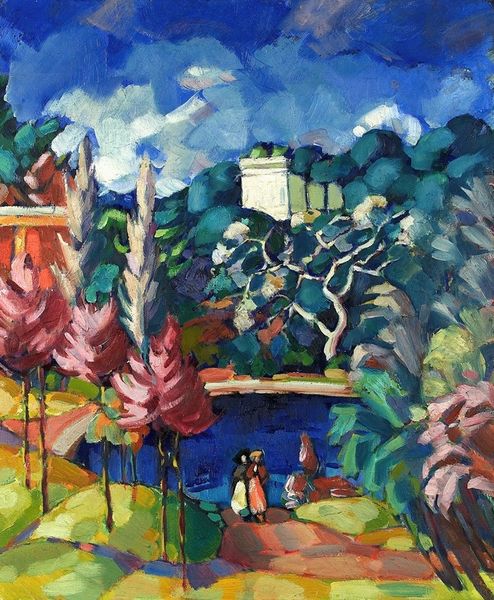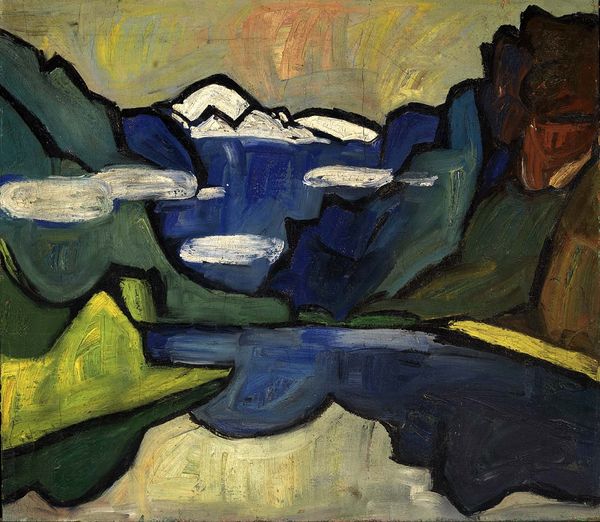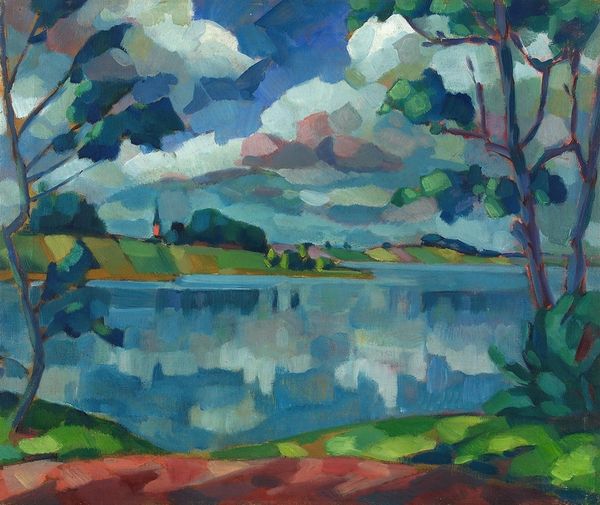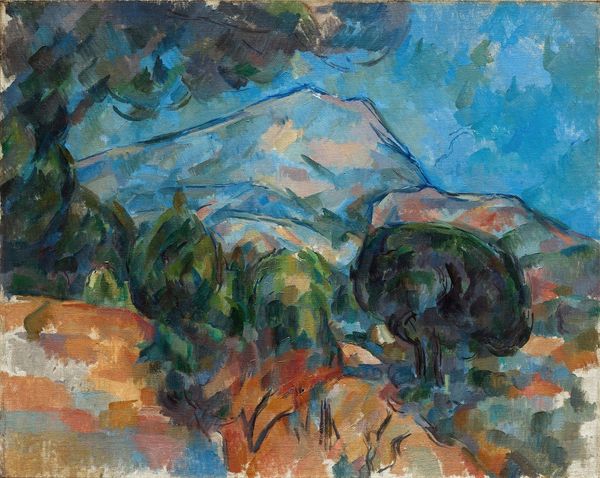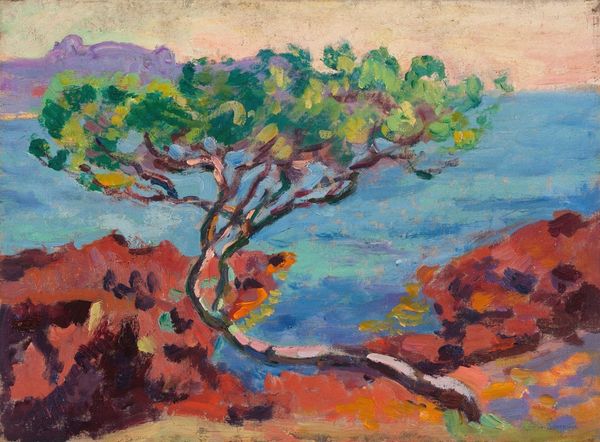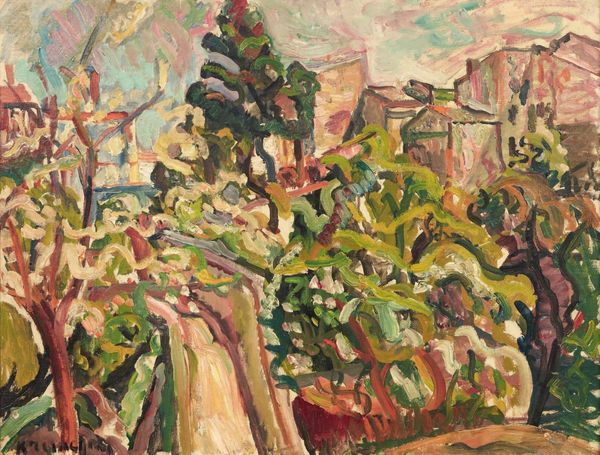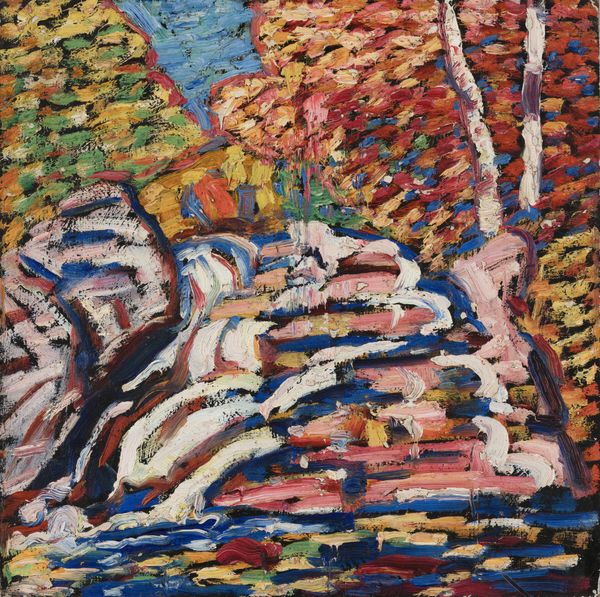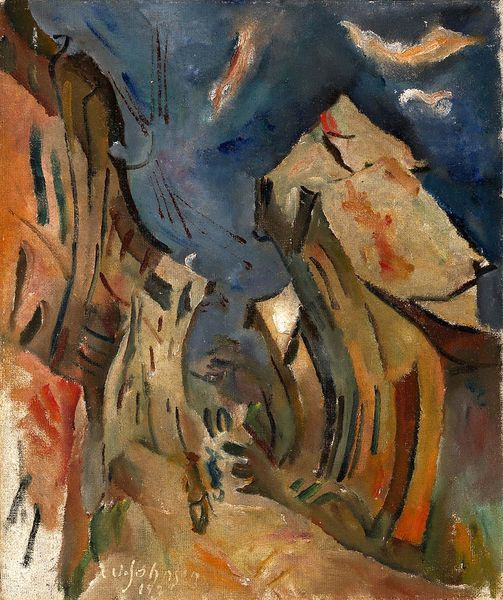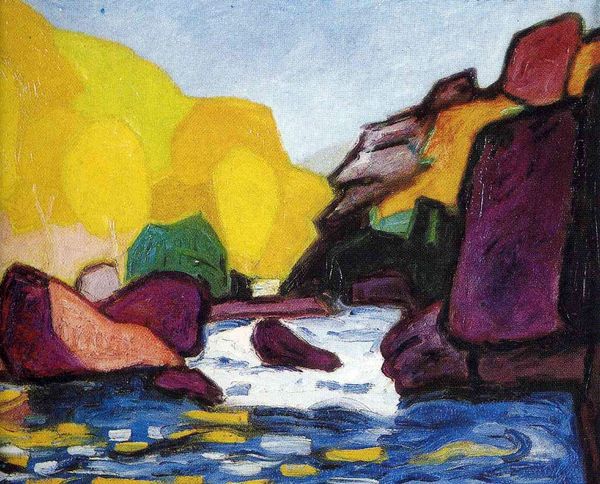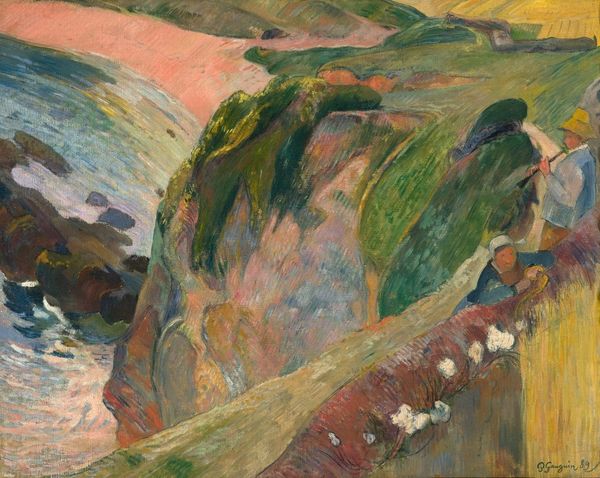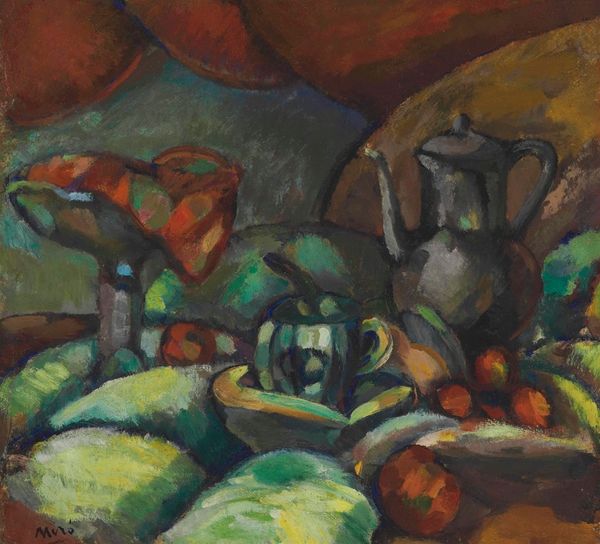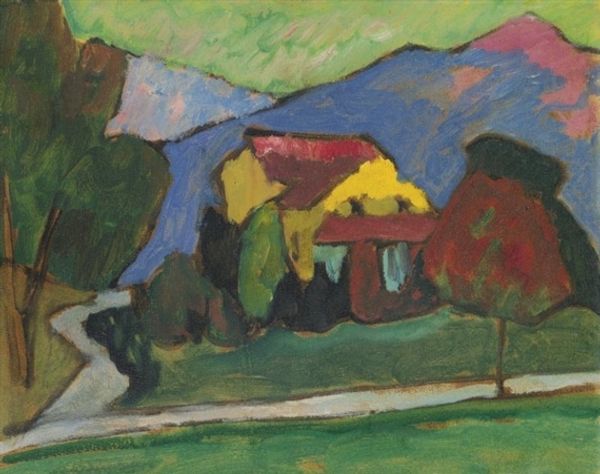
Copyright: Public Domain: Artvee
Curator: The chromatic intensity is really remarkable here. I find myself captivated by the juxtaposition of color fields—almost aggressive in their saturation, particularly the blues and reds. Editor: Yes, it strikes me immediately as very emotionally charged. There’s a real sense of drama conveyed in this vision of Capri. For our listeners, this oil painting, “Capri maastik,” was created between 1922 and 1923 by Konrad Mägi. It exemplifies, quite vividly, his expressionist style and also draws from the fauvist movement. Curator: The composition verges on abstraction. Mägi reduces the landscape to its elemental forms, defining space through these forceful blocks of pigment. See how he utilizes pure color rather than tonal modeling to create depth. Editor: Absolutely. The way the vibrant colors interact is crucial. Given the period in which Mägi created this, in the aftermath of World War I, this emotional expressiveness felt relevant. Many artists aimed to evoke feelings with landscape in an increasingly industrialized world. I am curious what kind of statements the Fauvist group made when he adopted some of their visual languages and concepts in this painting. Curator: We see something in Mägi that recalls Derain or Vlaminck but pushed further—beyond observation. The chromatic scale vibrates intensely without a grounding tonal center, generating affective intensity. Notice the tree—how the near-vertical axis anchors the entire plane to establish a visual order on the otherwise chaotic surface. It prevents this painting from falling apart into incoherence. Editor: The painting captures not just a physical place, but the sensation of being in that place. Its place in art history demonstrates the evolving trends in post-war expressions in landscape art. One can definitely understand why Mägi is revered for this distinctive style. Curator: Indeed. Its structure is compellingly vivid. Editor: Well, it is clear this particular piece, whether speaking to its chromatic choices or its impact on post-war era, prompts deep thoughts.
Comments
No comments
Be the first to comment and join the conversation on the ultimate creative platform.

